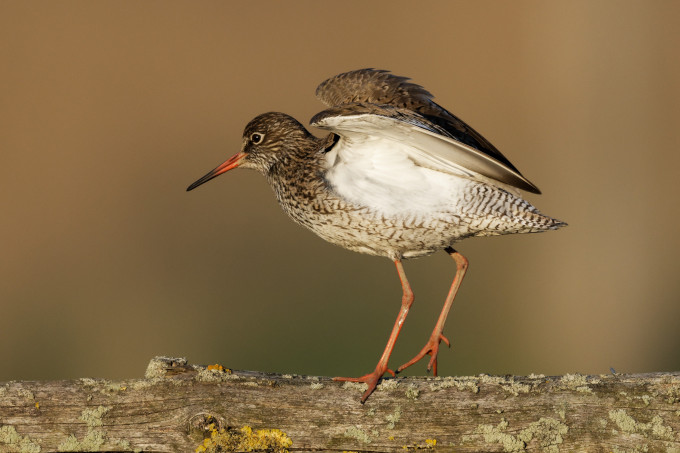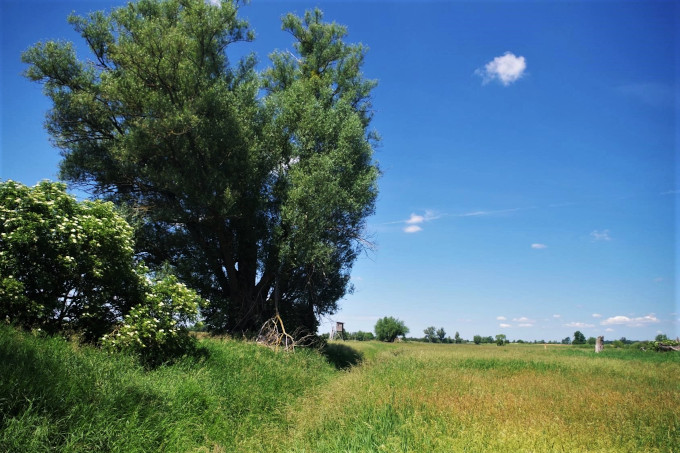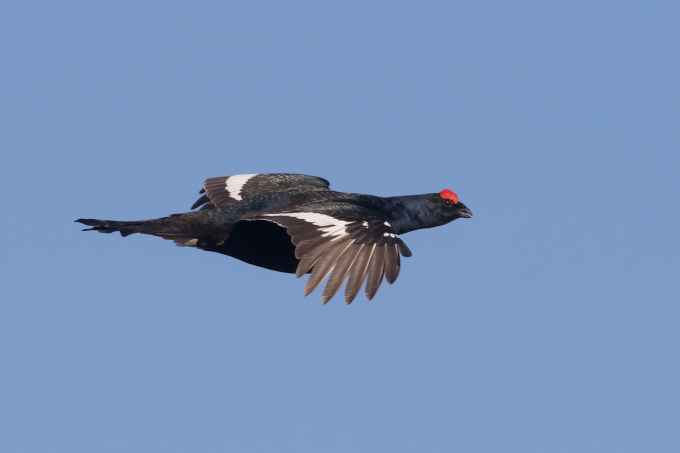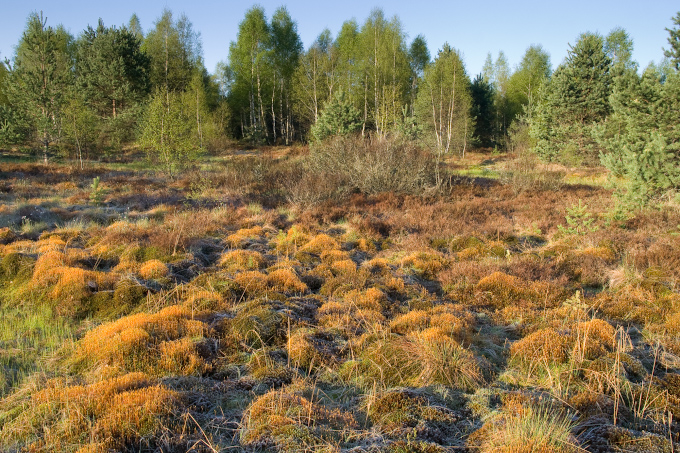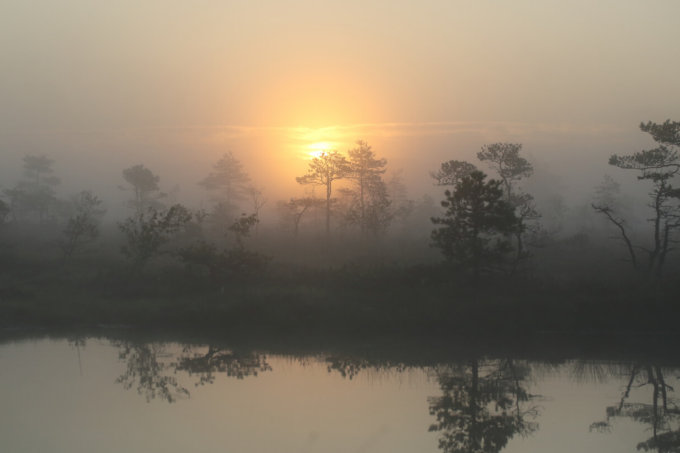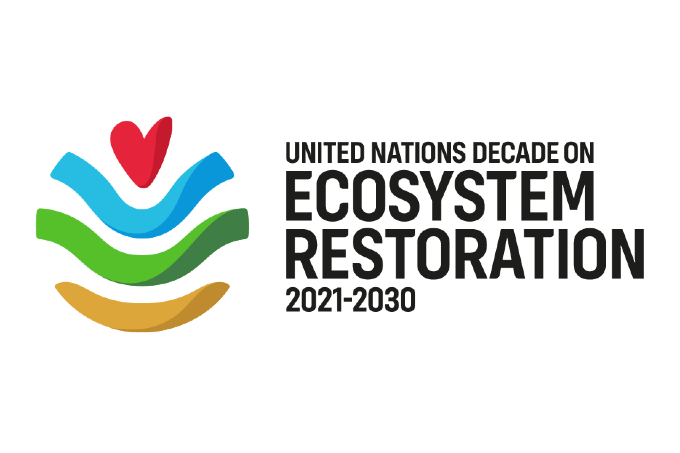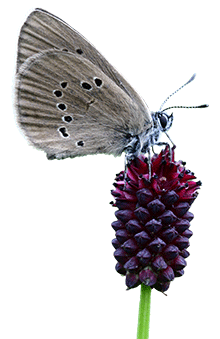A typical inhabitant of wet grassland: the redshank. It used to be a regular breeding bird in the Häsener Luch - photo: Hartmut Mletzko
Wet peatlands needed, now!
Fighting the climate crisis: NABU is coordinating a new EU peatland conservation project, LIFE Multi Peat
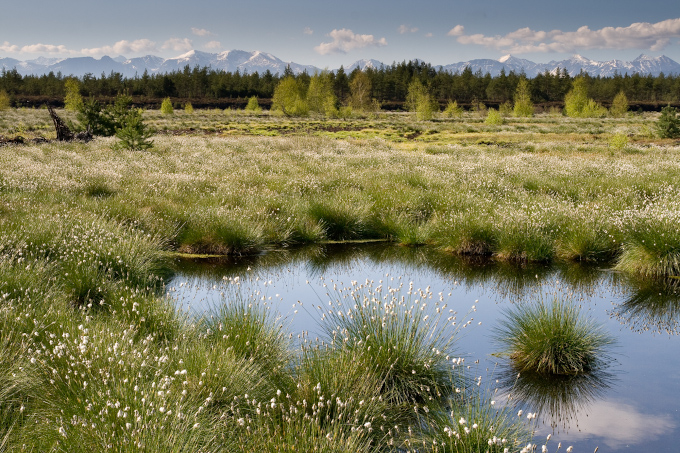
The Torfowiska Orawsko-Nowotarskie raised bog, Polish project site, LIFE Multi Peat - photo: Tomasz Wilk
February 2, 2022 - By 2050, we need to restore every square metre of peatland that is currently drained, with no exceptions. This is the only way we can meet the Paris climate targets. Globally this “only” applies to around 10 % of peatlands, but in Germany the figure is 98 %. In some countries in Europe, peatlands emit more CO2 than the entire industry and transportation sector put together. NABU has made the conservation of European peatlands one of its core concerns, and with its partners is implementing the new EU-funded LIFE Multi Peat project in five European countries.
The plan is to restore a near-natural water regime on a total of 689 hectares of peatland in Ireland, Belgium, the Netherlands, Poland and Germany over the next five years. These are mainly peatlands currently used for agriculture and forestry, some of which have been drained for centuries. Such areas emit high amounts of greenhouse gases, often 30 tonnes of CO2 equivalents per hectare and year. To measure the progress of the project, the restoration measures will be consistently monitored.
“We assume that we will be able to reduce the current greenhouse gas emissions at all project sites by up to 50 %. Towards the end of the project, we can expect to be cutting emissions by a total of 3600 tonnes of CO2 equivalents per year. This is an important contribution to the fight against the climate crisis.“
Letícia Jurema, NABU project coordinator, LIFE Multi Peat
Besides the practical peatland restoration on-site, we also focus on EU agricultural and climate policy. The project will demonstrate that agricultural usage of permanently wet peatlands is possible – which is a climate-friendly alternative to the common drainage-based land use. This alternative is called paludiculture, a term that refers to the use of wet peatland for agriculture and forestry, for example by harvesting reeds to thatch roofs. Such solutions will mainly be explored in the Belgian and German project areas. So far there is a great deal of theoretical knowledge in this area, but now it’s time to put this knowledge into practice. Working closely with farmers, we want to find ways in which sustainably managed peatlands can benefit everyone. There needs to be a paradigm shift in the EU: from the current practice of subsidizing peatland destruction to support for peatland preservation.
Once a breeding site for redshank, common snipe and lapwing
Around ten kilometres south of the Brandenburg town of Gransee lies the “Häsener Luch”. As part of LIFE Multi Peat, 20 hectares of this fen will be restored and eventually one day turn from a carbon source to a sink again. The peatland started to be drained in the mid-18th century, when a number of systematic drainage projects for agriculture and forestry were launched in Prussia. Due to its species diversity, around 50 hectares of the Luch were placed under protection in 1953. At the time, numerous wetland bird species, like redshank, common snipe, Eurasian curlew and lapwing, used to breed here, and rare peatland plants, such as orchids and common butterwort, could still be found.
In subsequent years the area was drained even more deeply, while some of the less accessible areas fell out of use. In 2018 NABU acquired parts of the unused area. Restoration efforts of the LIFE Multi Peat project will help to re-establish typical peatland vegetation as well as natural habitats for threatened bird species.
-
-
The Häsener Luch is located near Gransee in Brandenburg. In the next few years, project measures will be carried out over a 20-hectare area - photo: Jonathan Etzold / NABU
-
A true peatland native: a male black grouse flies over the Torfowiska Orawsko-Nowotarskie raised bog in Poland - photo: Tomasz Wilk
-
One of the aims of LIFE Multi Peat is to rewet the partially degraded Torfowiska Orawsko-Nowotarskie raised bog in Poland - photo: Tomasz Wilk
-
A view of the Irish project site: the National University of Ireland is one of seven partners in the EU project LIFE Multi Peat - photo: Niall O'Brolchain
The project peatlands in Ireland, Belgium, the Netherlands, Poland and Germany differ from each other: suited to the specific site conditions individually tailored restoration measures will be implemented.
Projects like LIFE Multi Peat are only possible with effective partners. As in the preceding project, LIFE Peat Restore (which included the rewetting of a peat bog in Estonia spanning several thousand hectares), NABU is once again working with experienced partners and stakeholders in Europe. The aim is to complete the project measures in all five countries by 2026.
Project facts
project title
LIFE Multi Peat
countries
Ireland, Belgium, Netherlands, Poland, Germany
period
2021 to 2026
partners
Natuurpunt, National University of Ireland, Natuurmonumenten, Eurosite, Klub Przyrodników, Ogólnopolskie Towarzystwo Ochrony Ptaków (OTOP), NABU
sponsored by / supported by
LIFE Climate Change Mitigation Programme
related topics
NABU is part of the LIFE Peat Restore project that aims to rewet degraded peatlands covering an area of 5,300 hectares in Germany, Poland, Latvia, Lithuania, and Estonia to restore their function as carbon sinks. more →
Intended as “a global rallying cry to heal our planet”, the UN has dedicated the years 2021 to 2030 to ecosystem restoration. Ringing in this next important chapter, it’s time to scale up action to save peatlands from degradation. Solutions are within reach. more →
An ecosystem is a complex of living organisms. NABU focuses on restoring ecosystems to their original state and important regulatory functions such as carbon sequestration. Ideally, by creating conditions in which the ecosystem can recover on its own. more →

